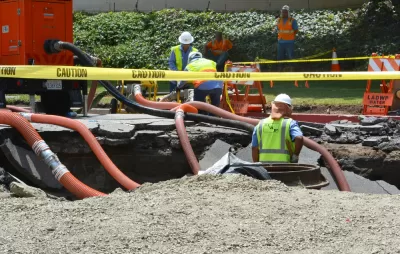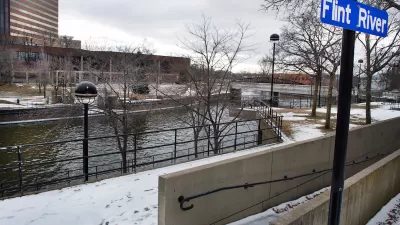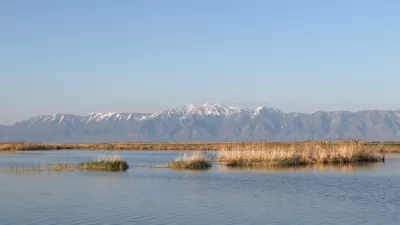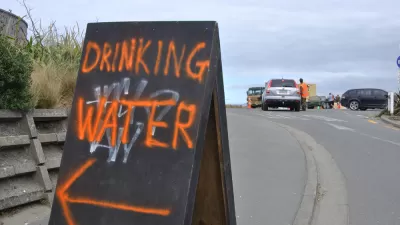With the federal funding situation uncertain, water utilities are left in widely varying financial positions. Comparing local utilities across six metrics paints a grim picture.

The incoming Trump Administration has made vague promises around federal infrastructure spending. "However, much of the hard work continues to rest on the shoulders of individual cities and states, where more than 95 percent of public spending on operations and capital improvements takes place annually."
For Brookings, Joseph Kane writes that despite widespread support for upgrades, "only about 17 percent of utilities are confident that they can just cover the cost of existing service through rates and fees—let alone pursue needed upgrades."
In the report, Kane compares local water utilities across "three different measures of utility finances—operating ratios, debt-to-asset ratios, and rates—and three broad economic variables—changes in population, changes in median household income, and the share of lower-income households in the primary city served—to create a new barometer for city-level water infrastructure investment."
The results aren't exactly promising. "Only a handful of drinking water utilities in the largest cities nationally rank highly across six major categories of water finance and related economic indicators."
FULL STORY: Investing in water: Comparing utility finances and economic concerns across U.S. cities

Maui's Vacation Rental Debate Turns Ugly
Verbal attacks, misinformation campaigns and fistfights plague a high-stakes debate to convert thousands of vacation rentals into long-term housing.

Planetizen Federal Action Tracker
A weekly monitor of how Trump’s orders and actions are impacting planners and planning in America.

Chicago’s Ghost Rails
Just beneath the surface of the modern city lie the remnants of its expansive early 20th-century streetcar system.

Bend, Oregon Zoning Reforms Prioritize Small-Scale Housing
The city altered its zoning code to allow multi-family housing and eliminated parking mandates citywide.

Amtrak Cutting Jobs, Funding to High-Speed Rail
The agency plans to cut 10 percent of its workforce and has confirmed it will not fund new high-speed rail projects.

LA Denies Basic Services to Unhoused Residents
The city has repeatedly failed to respond to requests for trash pickup at encampment sites, and eliminated a program that provided mobile showers and toilets.
Urban Design for Planners 1: Software Tools
This six-course series explores essential urban design concepts using open source software and equips planners with the tools they need to participate fully in the urban design process.
Planning for Universal Design
Learn the tools for implementing Universal Design in planning regulations.
planning NEXT
Appalachian Highlands Housing Partners
Mpact (founded as Rail~Volution)
City of Camden Redevelopment Agency
City of Astoria
City of Portland
City of Laramie





























